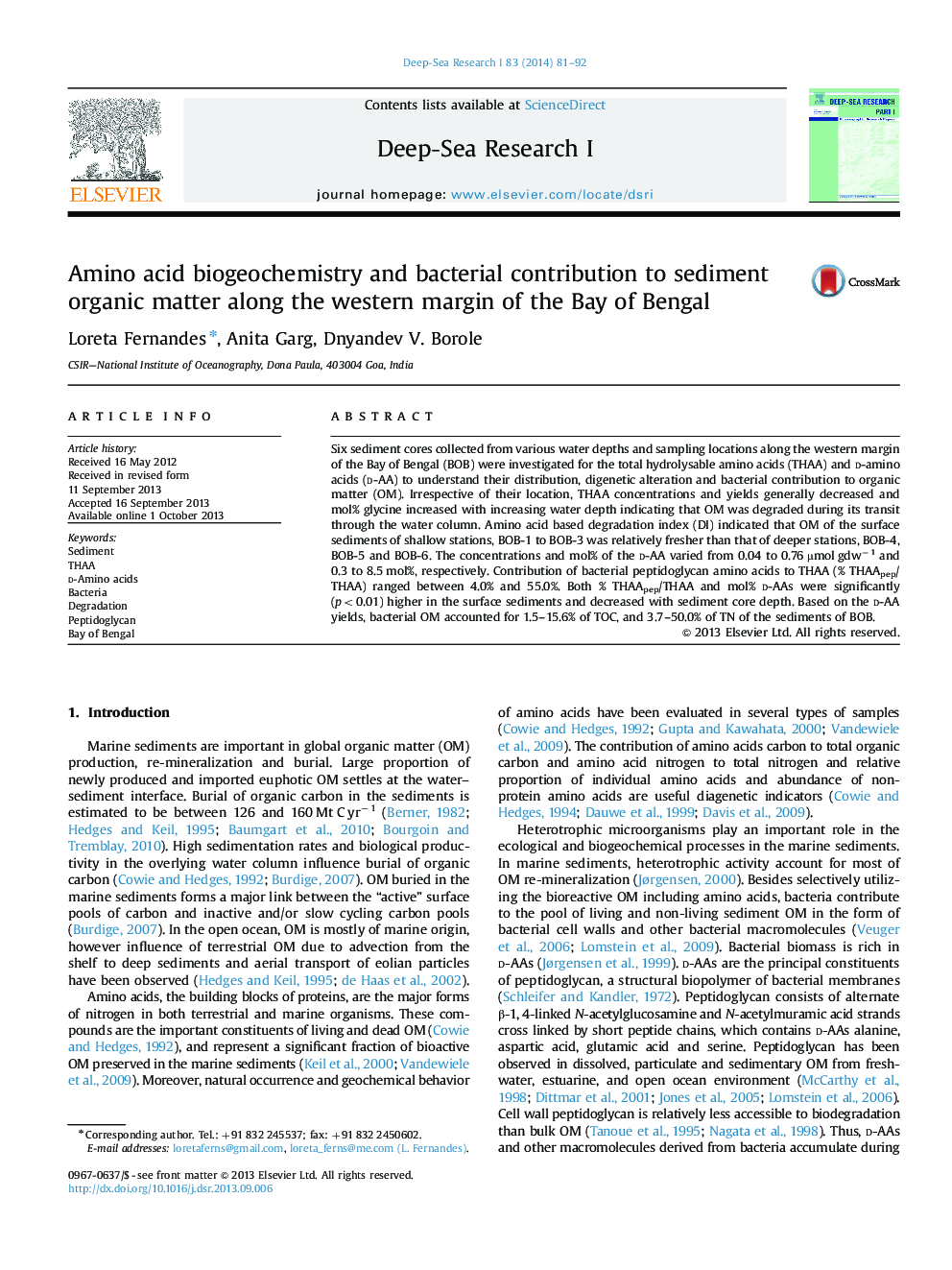| Article ID | Journal | Published Year | Pages | File Type |
|---|---|---|---|---|
| 6383700 | Deep Sea Research Part I: Oceanographic Research Papers | 2014 | 12 Pages |
Abstract
Six sediment cores collected from various water depths and sampling locations along the western margin of the Bay of Bengal (BOB) were investigated for the total hydrolysable amino acids (THAA) and d-amino acids (d-AA) to understand their distribution, digenetic alteration and bacterial contribution to organic matter (OM). Irrespective of their location, THAA concentrations and yields generally decreased and mol% glycine increased with increasing water depth indicating that OM was degraded during its transit through the water column. Amino acid based degradation index (DI) indicated that OM of the surface sediments of shallow stations, BOB-1 to BOB-3 was relatively fresher than that of deeper stations, BOB-4, BOB-5 and BOB-6. The concentrations and mol% of the d-AA varied from 0.04 to 0.76 µmol gdwâ1 and 0.3 to 8.5 mol%, respectively. Contribution of bacterial peptidoglycan amino acids to THAA (% THAApep/THAA) ranged between 4.0% and 55.0%. Both % THAApep/THAA and mol% d-AAs were significantly (p<0.01) higher in the surface sediments and decreased with sediment core depth. Based on the d-AA yields, bacterial OM accounted for 1.5-15.6% of TOC, and 3.7-50.0% of TN of the sediments of BOB.
Related Topics
Physical Sciences and Engineering
Earth and Planetary Sciences
Geology
Authors
Loreta Fernandes, Anita Garg, Dnyandev V. Borole,
